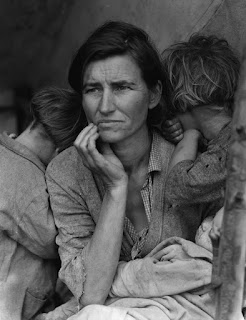Marechan Burrows
mb573016@ohio.edu
The power of pictures
Images are representative of words. Th can tell an entire story without actually containing one word. That's because visuals are sometimes more powerful than a complete sentence. Often, people would read an article based on the headlines but also because of its visually appealing design. The layout and photos a story contains is extremely important to its success.
But does that mean that photojournalism- the branch of journalism that mixes photography and journalism- has the same ethical issues of normal written journalism?
Showing graphic images is questionable for many people. Some wonder if it is necessary to show the dead body of a terrorist or if could be avoided.
New York Times and Yemen
A few weeks ago, the New York Times wrote a story about the war in Yemen and how it impacted the daily living of children. The article received a lot of mixed reviews not for the words that it contained exactly, but because of the images provided with the story.
There, between paragraphs of the article, were photos of children malnourished and looking hopeless. Members of the New York Times released an explanation of why they chose to publish the photos and how they felt it help to promote the article and awaken the people reading it, to the issues happening abroad. NYT- Yemen Crisis
The Newsroom and photo ethics
There have been many debates over whether certain photos should be shown to the public. Most of the notorious images in the last couple of decades have faced conflict from photographers as to whether they should be posted or not.
When it comes to the newsroom, it is important to understand who the target audience is and what their reactions would be.
If the photo is central to the story, then it it's important to show. If the story can be told without the use of the photo, then it is not necessary to the development of the story. Newsroom and photos
The Ethics of Photojournalism
So the question is: When is a picture too much to show the public?
This answer is fueled by what the photographer and editors believe the public deserves to know. Sometimes, the public needs to see disturbing images in order to become more aware and take a matter more serious that they had before.
Therefore, ethics is important in the field of photojournalism. The decision to post something or not to post something is based off not just company ethics but also personal ethics.
If graphic images are used, it is important to warn the public. Something that can upset some readers deserve not only an explanation as to why it was chosen, but also a viewer discretion.
Images should also be kept in context. Pictures should reflect society as accurately as possible. So there should not be photos that are out of context and placed just because they take up space. All photos tell a story, so the photos posted for the public to view should be meaningful to the story being told. Tips on photojournalism ethics
Iconic photo from The Great Depression

No comments:
Post a Comment